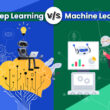This area of artificial intelligence is concerned with using data and algorithms to simulate human learning, enabling machines to get better over time, be more precise when making predictions or classifications, or discover data-driven insights. It functions in three fundamental ways:
- By employing a combination of data and algorithms to anticipate patterns and categorise data sets.
- By using an error function to assess accuracy.
- By optimising the fit of the data points into the model.
Types of Machine Learning:
Machine learning algorithms can be trained in a variety of ways, each with its benefits and drawbacks, as with any method. We must first examine the types of data that each type of machine learning consumes to comprehend each type’s benefits and drawbacks. Labelled data and unlabeled data are the two types of data used in machine learning.
In addition, certain machine learning algorithms have extremely specific applications, yet, the three primary approaches are still in use today.
1. Reinforcement Learning-
Certain differences are revealed when comparing reinforcement learning to supervised and unsupervised learning. The relationship to reinforcement learning is less clear than the relationship between supervised and unsupervised learning (the presence or absence of labels).
Some people attempt to link the two concepts more closely by referring to reinforcement learning as a form of learning that depends on a time-dependent sequence of labels. I would rather consider reinforcement learning as growing from missteps. In any setting, a reinforcement learning algorithm will start by making many mistakes.
2. Supervised Learning-
In supervised learning, the machine must learn how to translate the input to the desired output by being given both the input and the desired output. To achieve this, the machine is trained on a set of example inputs and outputs that are statistically representative.
Teaching a computer to recognise an image of a dog could serve as an illustration of this. The machine would be trained by being shown images of different breeds of dogs that were identified as dogs as opposed to images of cats that were tagged as cats.
Based on the information it had been trained on, it would identify a dog when it saw a picture of one. It accomplishes this by calculating the unique properties, or features, of the input image and contrasting them with the features of images or objects that have been labelled.
3. Unsupervised Learning-
The machine learning algorithm examines the data in this case to find patterns. There isn’t a human operator or answer key to offering guidance. Instead, the machine analyses the data at hand to find the correlations and relationships.
In an unsupervised learning process, a machine learning algorithm is given a sizable amount of data to analyse and respond to as necessary. To describe the structure of the data, the algorithm tries to organise it in some way.
This could entail clustering the data or setting it up to make it appear more organised. It eventually becomes more adept at making decisions based on data as it evaluates more of it.









